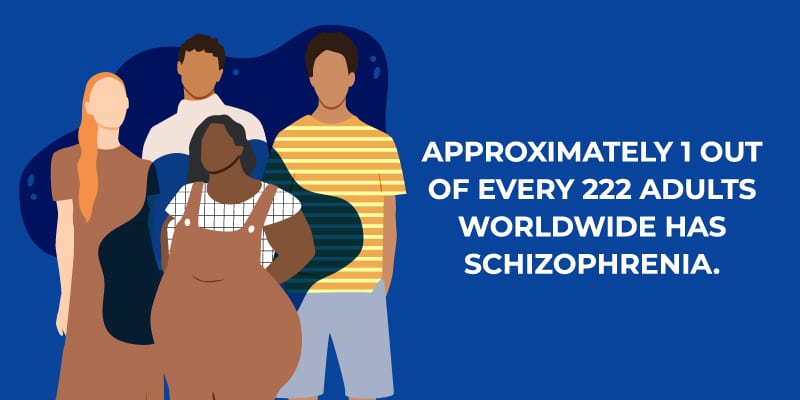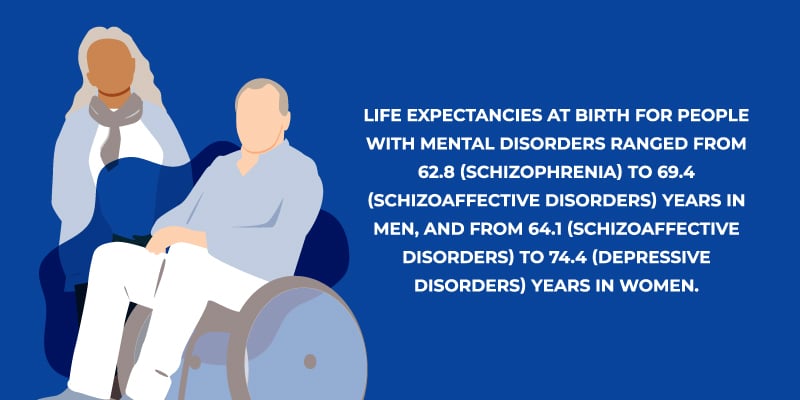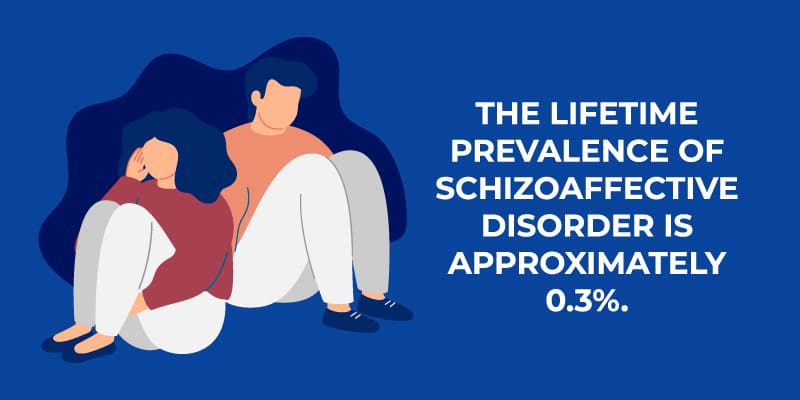

Schizoaffective Disorder Diagnosis and Treatment
Learn more about how to get an accurate schizoaffective disorder diagnosis and effective treatment at J. Flowers Health Institute.
Table of Contents
What Is Schizoaffective Disorder?
Schizoaffective disorder is a mental health condition characterized by many of the same symptoms as schizophrenia. Schizoaffective disorder is a chronic illness. This means a schizoaffective disorder diagnosis indicates a lifelong condition. But, with treatment, it is possible to achieve recovery.
Separating Schizophrenia from Schizoaffective Disorder
Commonality of Schizoaffective Disorder
Schizoaffective Disorder Definition and Overview
Notable People With a Schizoaffective Disorder Diagnosis
- Mathematician and physicist Sir Isaac Newton
- Beach Boys member Brian Wilson
- Fleetwood Mac member Peter Green

What Causes Schizoaffective Disorder?
Genetics
Other Potential Causes
Self-Medication
It worsens mental health symptoms, and, in some cases, self-medication evolves into a substance use disorder.
When Do Signs of Schizoaffective Disorder Manifest?
What Triggers Schizoaffective Disorder?
Stress
Childhood Trauma
- Neglect
- Abuse
- Traumatic loss
Drug Use
Brain Structure
Brain chemistry and structure may influence the likelihood of someone developing the disorder, but scientists are still in the early stages of discovering the link between the brain and the condition.

Schizoaffective Disorder Types and Symptoms
There are two types of schizoaffective psychosis: bipolar type and depressive type. The bipolar type includes episodes of mania and can also involve episodes of major depression. Depressive types experience only depressive episodes.8
Schizoaffective Disorder Symptoms
-
Delusions: This means the person believes something to be true despite it being disproved.
Hallucinations: The person sees, hears, feels, smells, or tastes things that aren’t there.
Impaired Speech or Thinking: Impaired or incoherent speech can occur. The person may experience disorganized thinking. They may switch from topic to topic or say things entirely unrelated to the relevant conversation.
Strange Behavior: This includes behaviors that are out of character for the affected person.
Negative Feelings: This can include depression and feelings of hopelessness, emptiness, and sadness.
Periods of Mania: During these periods, the affected person has a significant increase in energy and a decreased need for sleep for several days. They also exhibit mood changes and strange behavior.
Other Symptoms
- Impaired functioning at school or work
- Problems with hygiene
- Problems maintaining physical activity or appearance
Schizoaffective Disorder Diagnosis
- A period of significant mood alteration involving either mania or depression must co-occur with schizophrenia symptoms.
- Hallucinations, delusions, or other psychotic symptoms must persist for a period of two or more weeks, during which time a major mood episode must not occur.
- Periods of uninterrupted, persistent mental illness must also happen.
- Substance use disorder must be ruled out as a cause of psychotic symptoms.
Importance of a Comprehensive Exam
Schizoaffective Disorder Misdiagnosis
Schizoaffective Disorder vs. Schizophrenia
- Delusions
- Hallucinations
- Disorganized thinking
- Mood disorder symptoms, like depression and mania
Schizophrenia, on the other hand, does not often have mood disorder symptoms.
Schizophrenia Symptoms
- Hallucinations
- Hearing voices
- Paranoia
- Frenzied speaking
- Impaired motor coordination
- Agitation
- Other cognitive and behavioral symptoms
Schizoaffective Disorder vs. Bipolar Disorder
As previously noted, someone with a schizoaffective disorder diagnosis will experience psychotic symptoms, such as delusions and hallucinations. Depending on the type of schizoaffective disorder, they may experience manic or depressive symptoms in addition to psychotic symptoms.
The Dangers of Misdiagnosis

Schizoaffective Disorder Medications and Treatment
There are several types of schizoaffective disorder treatments. The ideal treatment varies from person to person. Because the most effective mental health care program includes individualized treatment plans, our J. Flowers Health Institute team works with each of our patients to understand their treatment needs and goals.
In general, people respond best to a treatment plan that includes medications, psychotherapy, and training to help them achieve and excel at basic life skills, including social and vocational skills.
Medications
Medical and mental health professionals often prescribe three categories of medications to treat schizoaffective disorder. These medications help to treat depression symptoms and reduce the intensity and frequency of mood alterations.
Antipsychotic Medications
- Invega (paliperidone), which is FDA-approved specifically for the treatment of schizoaffective disorder
- Seroquel (quetiapine)
- Abilify (aripiprazole)
- Lamictal (lamotrigine), an anticonvulsant
Mood Stabilizers
Mood-stabilizing medications help regulate mood for those with schizoaffective disorder bipolar type. Mood stabilizers may reduce the intensity of mood swings that occur with the “high” associated with manic episodes and the “low” associated with depressive episodes.
Antidepressants
- Sadness
- Worthlessness
- Hopelessness
Psychotherapy
Psychotherapy Approach
Group and Family Sessions
Group or family sessions are beneficial as they reduce feelings of isolation that are common for someone diagnosed with schizoaffective disorder.
Group and family sessions offer a safe and supported space to discuss worries and concerns while improving social skills.

Living With a Schizoaffective Disorder Diagnosis
Living and thriving after a schizoaffective disorder diagnosis takes ongoing treatment and support from mental health providers and loved ones. Family members can help loved ones by participating in their treatment and learning about schizoaffective disorder and potential symptom risks.
How J. Flowers Health Institute Can Help
At J. Flowers, personalized one-on-one care encourages patients and supports them on their journey to regaining independence and living healthy, fulfilling lives. Our “Living MRI” is a comprehensive diagnostic evaluation that takes a look at all of your symptoms for expansive and supportive assistance.
To learn more about treatment and healing after a schizoaffective disorder diagnosis, contact us at J. Flowers Health Institute today.
Resources
- https://www.who.int/news-room/fact-sheets/detail/schizophrenia#:~:text=Schizophrenia%20affects%20approximately%2024%20million,as%20many%20other%20mental%20disorders
- https://www.webmd.com/schizophrenia/schizophrenia-outlook#:~:text
- https://www.nami.org/About-Mental-Illness/Mental-Health-Conditions/Schizoaffective-Disorder
- https://www.icd10data.com/ICD10CM/Codes/F01-F99/F20-F29/F25-
- https://healthresearchfunding.org/famous-people-schizoaffective-disorder/
- https://www.ncbi.nlm.nih.gov/pmc/articles/PMC6094954/
- https://www.depts.ttu.edu/studenthealth/SupportingSomeoneWithSchizoaffectiveDisorder/
- https://www.mayoclinic.org/diseases-conditions/schizoaffective-disorder/symptoms-causes/syc-20354504
- https://www.webmd.com/schizophrenia/mental-health-schizoaffective-disorder





